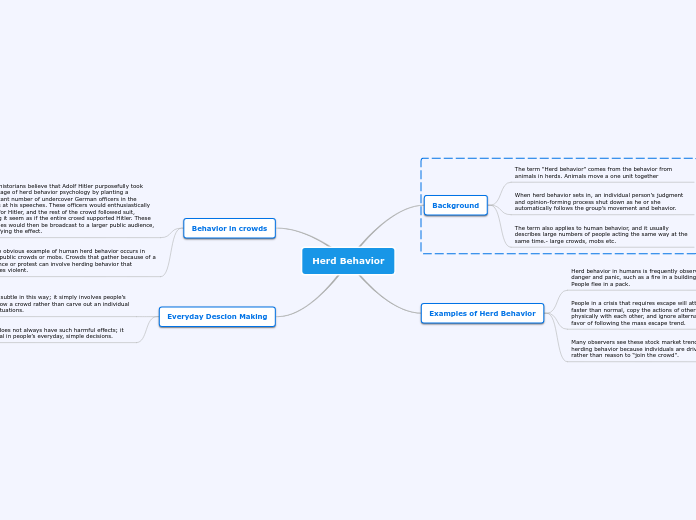Herd Behavior
Background
The term "Herd behavior" comes from the behavior from animals in herds. Animals move a one unit together
When herd behavior sets in, an individual person’s judgment and opinion-forming process shut down as he or she automatically follows the group’s movement and behavior.
The term also applies to human behavior, and it usually describes large numbers of people acting the same way at the same time.- large crowds, mobs etc.
Examples of Herd Behavior
Herd behavior in humans is frequently observed at times of danger and panic, such as a fire in a building or a shooting. People flee in a pack.
People in a crisis that requires escape will attempt to move faster than normal, copy the actions of others, interact physically with each other, and ignore alternative strategies in favor of following the mass escape trend.
Many observers see these stock market trends as examples of herding behavior because individuals are driven by emotion rather than reason to “join the crowd".
Behavior in crowds
Some historians believe that Adolf Hitler purposefully took advantage of herd behavior psychology by planting a significant number of undercover German officers in the crowds at his speeches. These officers would enthusiastically cheer for Hitler, and the rest of the crowd followed suit, making it seem as if the entire crowd supported Hitler. These speeches would then be broadcast to a larger public audience, magnifying the effect.
A more obvious example of human herd behavior occurs in dense public crowds or mobs. Crowds that gather because of a grievance or protest can involve herding behavior that becomes violent.
Everyday Descion Making
Herding can be subtle in this way; it simply involves people’s tendency to follow a crowd rather than carve out an individual path in many situations.
Herd behavior does not always have such harmful effects; it can be influential in people’s everyday, simple decisions.
